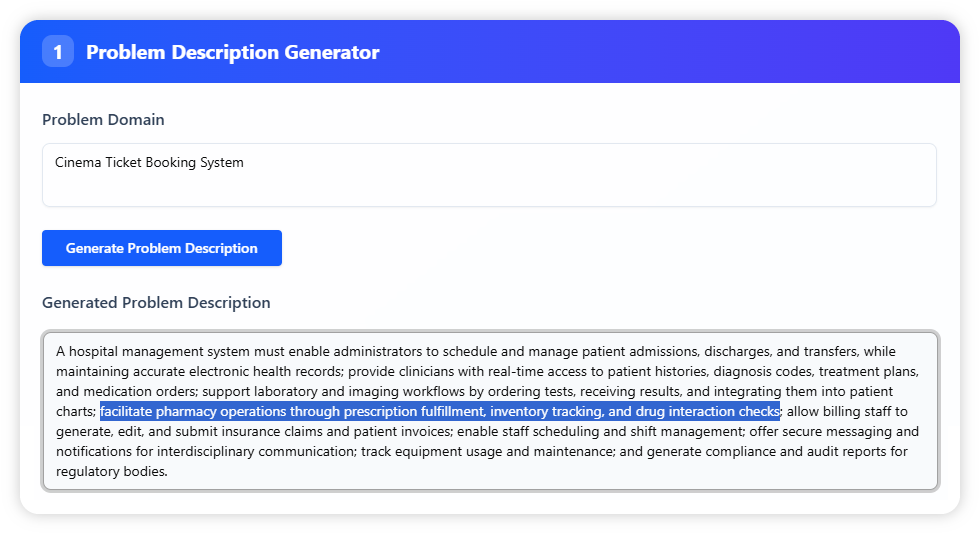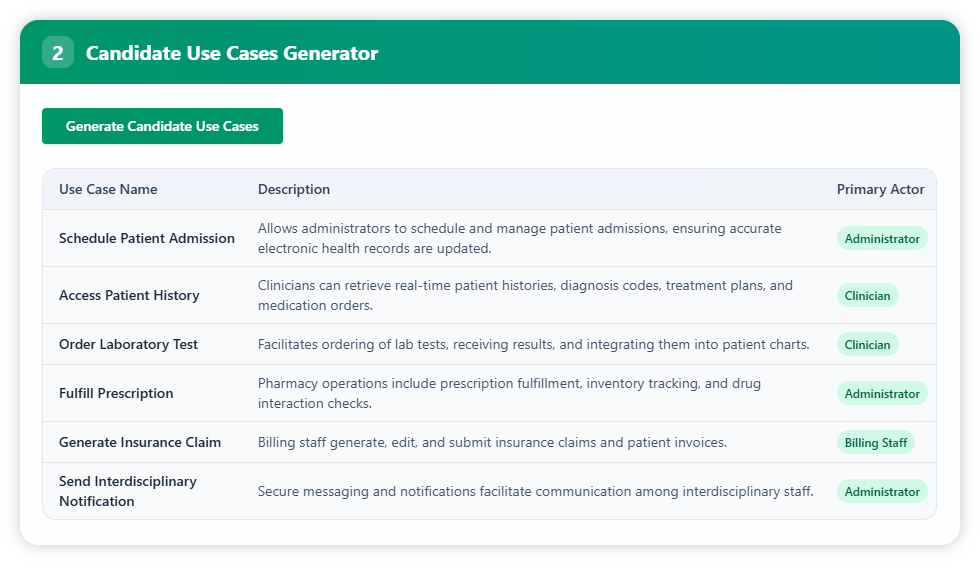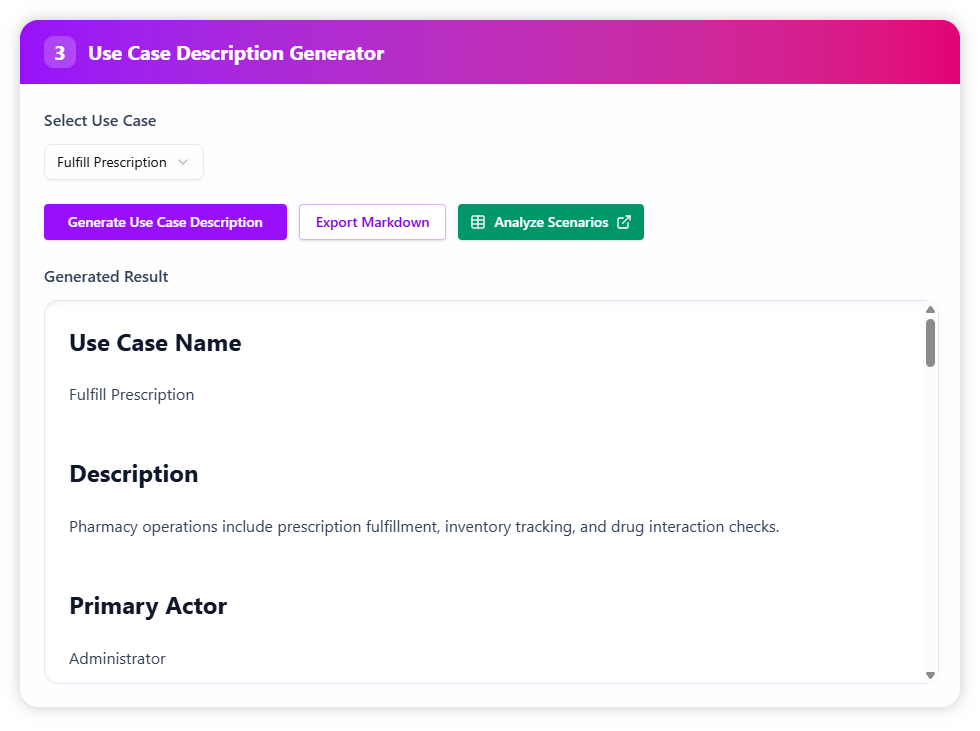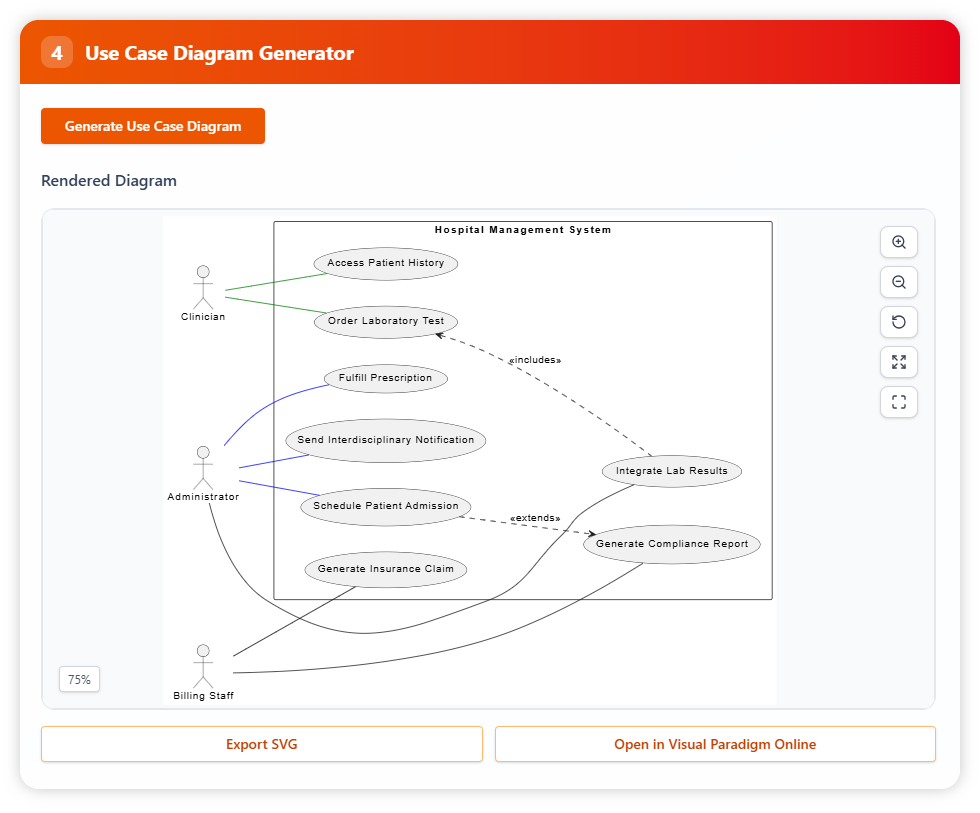Now Reading: AI-Generated Use Case Description: Hospital Management System
-
01
AI-Generated Use Case Description: Hospital Management System
AI-Generated Use Case Description: Hospital Management System
The hospital management system is a complex environment where administrators, clinicians, pharmacists, and billing staff need to coordinate seamlessly. This example shows how the use case description generator can transform a broad problem domain into structured use cases and diagrams, making healthcare workflows clearer and more manageable.
Step 1: Define the Problem Domain
Start by entering Hospital Management System as the problem domain. The tool generates a detailed and editable problem description, capturing everything from patient admissions to billing and interdisciplinary communication. You can refine this description to match specific hospital needs before moving forward.

Step 2: Generate Candidate Use Cases
Next, click the “Generate Candidate Use Case” button. The tool automatically provides a set of candidate use cases, each with a name, description, and primary actor. For this case, the generated use cases cover key activities such as scheduling admissions, accessing patient history, ordering lab tests, fulfilling prescriptions, generating insurance claims, and sending staff notifications.

Step 3: Create a Use Case Description
From the list of candidate use cases, you can select one to expand into a detailed use case description. In this example, the chosen use case is Fulfill Prescription. The tool generates a structured description including preconditions, main flow, alternate flows, and exceptions . If needed, you can also export this use case description in Markdown format for documentation or sharing.

Step 4: Generate the Use Case Diagram
Finally, you can generate a use case diagram representing the relationships between actors and use cases in the hospital system. The diagram can be exported as an SVG file or opened directly in Visual Paradigm Online for further editing and customization.


